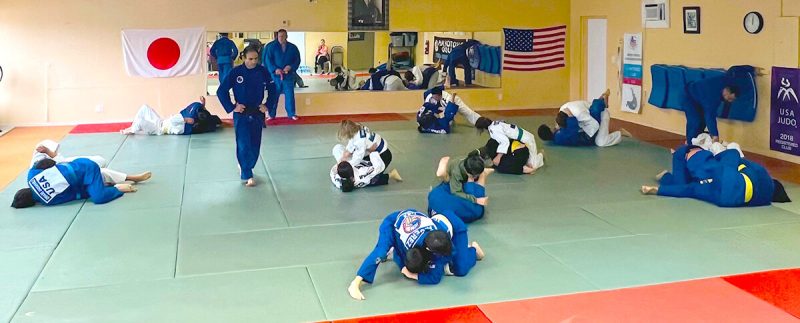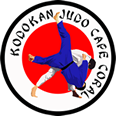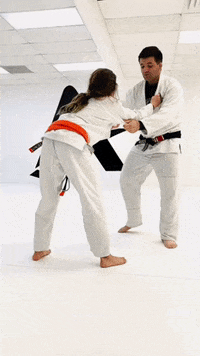What Is The Best Martial Art for Self-Defense?
The Ultimate Martial Art for Self-Defense
In the diverse landscape of martial arts, each discipline brings its unique philosophy and techniques to the table. However, when it comes to practical self-defense in real-world situations, Judo stands out as particularly effective. Founded in 1882 by Jigoro Kano, this Japanese martial art has evolved into not just a competitive sport but a comprehensive system for personal protection.
The Science of Maximum Efficiency
Judo’s founding principle, “maximum efficiency with minimum effort,” makes it inherently practical for self-defense scenarios. Unlike styles that rely on kicking & punching, brute force, or complex movements, Judo teaches practitioners to use an attacker’s momentum and energy against them. This scientific approach to combat means that physically smaller individuals can effectively defend themselves against larger assailants—a crucial advantage in real-world self-defense situations.
The core of Judo’s effectiveness lies in its leverage-based techniques. By understanding the mechanics of balance and body positioning, Judo practitioners (judoka) learn to amplify their natural strength exponentially. This mechanical advantage allows for efficient neutralization of threats without requiring exceptional physical strength.
Mirroring Real-World Conflict Progression
One of Judo’s most significant advantages is how perfectly its training methodology mirrors the natural progression of real-world confrontations. Statistics show that approximately 95% of physical altercations end up on the ground—but critically, they almost always begin standing up. This standing-to-ground transition is exactly what Judo training emphasizes.
Martial arts like Karate, Tae Kwon Do, Kickboxing, Kung Fu, etc focus almost exclusively on kicking and punching, and lack the critial ground fighting component. On the other hand, martial arts like Brazillian Jiu Jitsu (aka BJJ or Jiu Jitsu or Jujutsu) focus almost exclusively on the ground fighting component and lack the training in standing confrontations and takedowns.
Judo, however, fully embraces both aspects of real-world self-defense situations…
In a typical Judo session, practitioners begin with standing techniques (tachi-waza), engaging in the throws and sweeps that dominate the initial phase of combat. These techniques prepare judoka for the crucial first moments of any confrontation. As the training progresses, the fight transitions to the ground (ne-waza), where practitioners apply holds, chokes, and joint locks that can end the confrontation decisively.
This seamless progression from standing to ground fighting creates muscle memory that automatically activates during real confrontations. While many martial arts focus exclusively on either standing techniques or ground fighting, Judo’s holistic approach prepares practitioners for the entire arc of physical conflict, from initial engagement to final resolution.
The Ground Game Advantage
The reality that most physical confrontations end on the ground gives Judo practitioners a significant advantage. While many martial arts neglect ground fighting entirely, Judo develops comprehensive skills for this critical phase of combat. The ground techniques (ne-waza) provide essential tools for controlling an opponent once the confrontation transitions to the ground.
Judo’s ground techniques include:
- Immobilization holds (osaekomi-waza)
- Choking techniques (shime-waza)
- Joint locks (kansetsu-waza)
These provide judoka with multiple options for neutralizing threats without necessarily causing permanent injury—an important legal consideration in self-defense scenarios.

Control Without Excessive Force
One of Judo’s greatest strengths as a self-defense system is its emphasis on control rather than destruction. Modern self-defense isn’t just about stopping an attacker—it’s about doing so within appropriate legal boundaries. Judo provides a spectrum of responses from gentle control to complete incapacitation, allowing defenders to match their response to the level of threat.
This scalability makes Judo particularly valuable in today’s society, where legal ramifications often follow physical altercations. A judoka can choose to simply throw and pin an aggressor without causing serious injury, or escalate to more definitive submissions if the situation demands it.
The Psychological Edge
Self-defense isn’t purely physical—psychological factors play a crucial role. Judo training builds confidence through repeated success against resisting opponents. This confidence translates to better decision-making under pressure and less likelihood of freezing during a confrontation.
Many martial arts dojos have resorted to “shadow” sparring, where you never make contact with your opponent. Other dojos that do allow contact (understandably) train their students to pull their punches and kicks so no one gets injured. In both cases, you’re never really exposed to a realistic self-defense situation and you’re psycologically training yourself to always pull your punches, which makes you much less prepared for an actual physical altercation in a real-life situation.
Furthermore, the close-contact nature of Judo training desensitizes practitioners to the stress and discomfort of physical confrontation. When actually faced with a threatening situation, a judoka is less likely to be overwhelmed by the psychological shock that often accompanies unexpected physical aggression.
Balance in Training Methodology
Judo offers a balanced training methodology that develops all physical attributes needed for effective self-defense:
- Strength development through resistance training
- Cardiovascular conditioning through intense randori sessions
- Flexibility through technical practice
- Balance and coordination through throw practice
- Timing and distance management through competitive practice
This comprehensive physical development creates well-rounded defenders capable of handling various threats.
Real-World Self-Defense Success Stories
The effectiveness of Judo for self-defense isn’t theoretical. Law enforcement agencies worldwide incorporate Judo techniques into their training protocols. The Tokyo Metropolitan Police adopted Judo as their primary martial art for officer training due to its proven effectiveness in apprehending suspects without excessive force.
Additionally, numerous documented cases exist of judoka successfully defending themselves against armed and unarmed attackers. The practical results speak volumes about the art’s real-world application.
The Falling Advantage
Perhaps one of the most overlooked aspects of Judo’s self-defense value is its emphasis on ukemi (breakfalling). Learning to fall safely prevents serious injury not just in training but in everyday life. This skill alone can prevent devastating injuries during accidental falls or when being forcibly taken to the ground in a confrontation.
Many martial arts neglect this critical skill, focusing only on remaining standing. Judo’s philosophy acknowledges the reality that sometimes you will fall—and teaches you to do so safely.
The Complete Package for Self-Defense
While no martial art is perfect for every possible scenario, Judo offers perhaps the most complete package for practical self-defense. Its scientific principles, focus on real-world application, and training methodology that mirrors the natural progression of conflict make it uniquely suited to modern self-defense needs.
The combination of standing techniques to create distance or take an opponent down, transitional skills to control the descent to the ground, and sophisticated ground control methods provides a comprehensive system that addresses the full spectrum of physical confrontation—from the initial standing engagement to the ground phase where most conflicts are ultimately resolved.
For those serious about developing practical self-defense capabilities rather than just learning flashy techniques or pursuing competitive success, Judo offers a time-tested system that continues to prove its worth in real-world applications. Its blend of tradition, science, and adaptability makes it not just a martial art, but perhaps the ultimate system for personal protection in today’s world.
Visit Us and Try Your First Class for FREE!
Call ahead or just stop in during one of our scheduled Judo & Jiujitsu classes and hop on the mat with us!
Please try to arrive at least 10 minutes early so we can get you all set up with a clean gi (uniform) to use during class.

